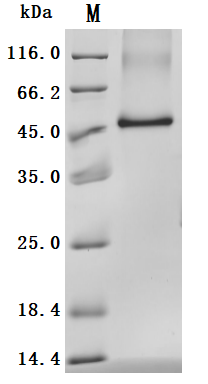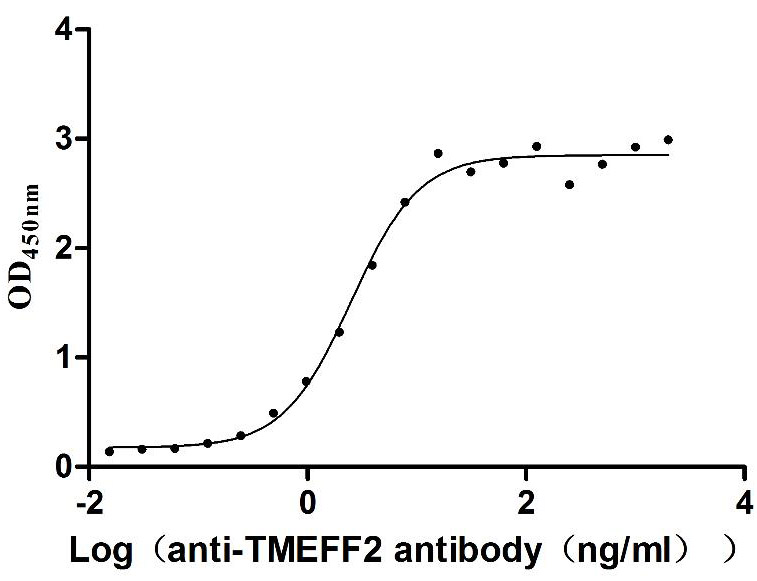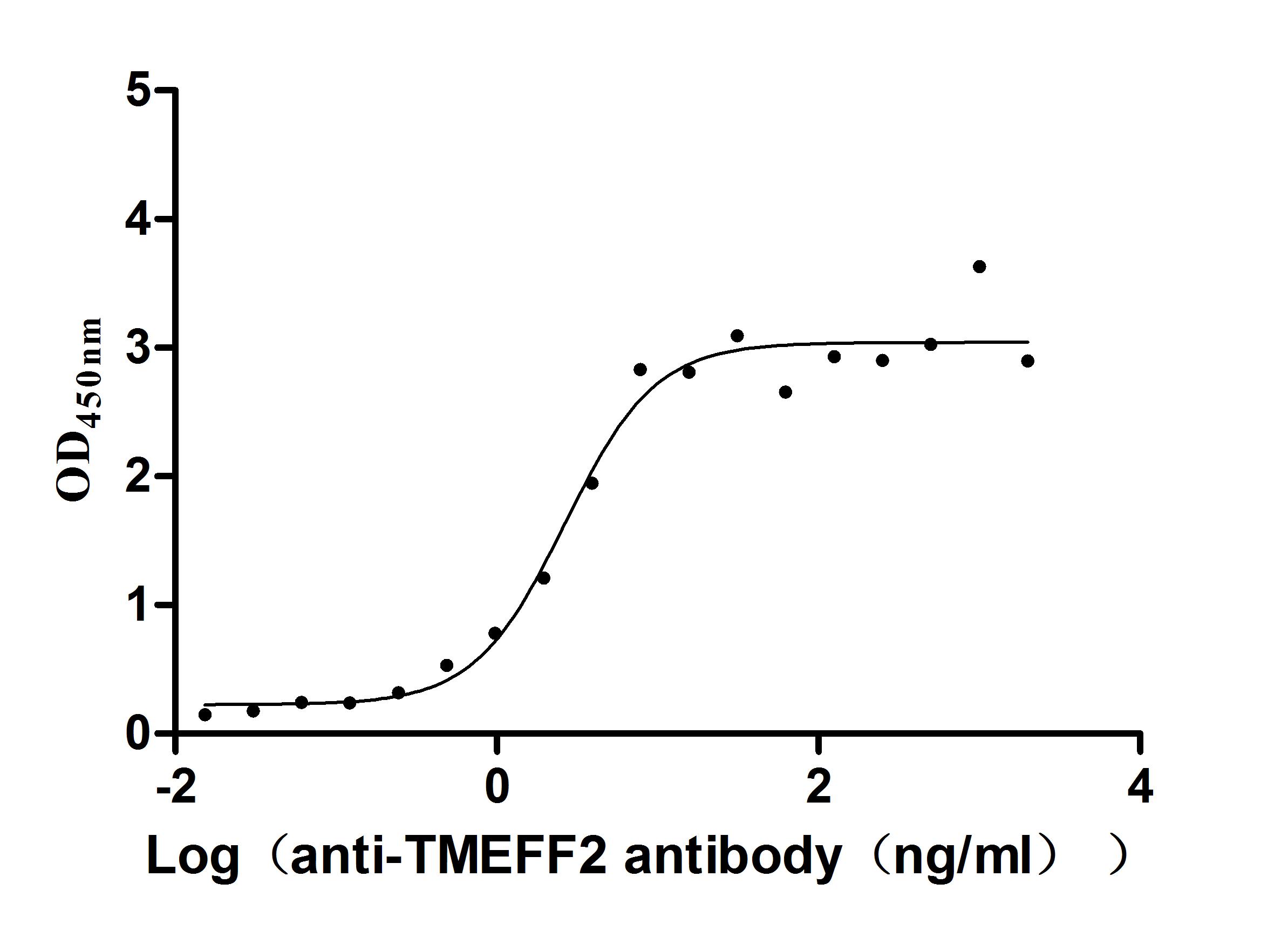This Human TMEFF2 recombinant protein was produced in mammalian cell, where the gene sequence encoding Human TMEFF2 (41-320aa) was expressed with the C-terminal 10xHis tag. The purity of this TMEFF2 protein was greater than 95% by SDS-PAGE. The activity was validated.
TMEFF2, also known as TR-2, TPEF, HPP1, TENB2, is a member of the epidermal growth factor (EGF) family and was first isolated from human gastric fibroblasts by Uchida et al. It contains 1 EGF-like domain and 2 follistatin-like domains, and is a highly conserved transmembrane protein. TMEFF2 protein is abnormally expressed in various malignant tumors, and plays different roles in different types of tumors. TMEFF2 is closely related to the occurrence and development of various malignant tumors such as esophageal cancer, gastric cancer, colorectal cancer, gallbladder cancer, prostate cancer, bladder cancer, and endometrial cancer, suggesting that TMEFF2 has the potential to become a tumor-specific marker.









